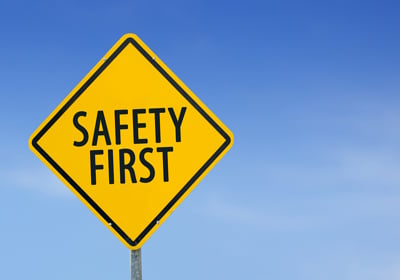
A leading figure in the health and safety field says HR may be overlooking an opportunity to make their workplaces safer.

HR professionals may be missing an important opportunity to make their workplaces safer – that’s the warning from one industry expert who says the issue is about more than rules and regulations.
“Stop thinking about safety as just policies and procedures,” says Terry Johnson, director of Simpson Grierson’s health and safety advisory services. “Yes, it’s important but very often it’s the non-safety stuff that actually affects your business.”
Johnson – who’s also held senior H&S roles at Fonterra, NZ Post and DuPont – says organisations often isolate safety from other functions they perceive as non-safety related without realising they work better when integrated.
“Organisations tend to forget that health and safety came along as business process much later than other things – you’ve had finance departments, procurement, and quality for a long time, then HR came along and now we’ve got health and safety as well,” he says.
“What often happens is, those systems grow up independent to each other and people don’t realise the systems that sit aside health and safety can have as much effect on H&S as what the H&S systems do.”
Using procurement as an example, Terry explains how there may be a financial decision to purchase something that’s cheaper and inadequately tested in the workplace.
“You find it breaks down faster or that’s unusable by the people and they throw it away and use something else, then it can have an impact on health and safety but there’s no link back to the original decision because the systems don’t talk to each other,” he says.
The Auckland-based safety expert says safety should be tied into every aspect of the business and claims recruitment is another perfect example.
“People wouldn’t think of recruitment as a health and safety system however if you get it wrong, what you’re doing is bringing people into the workplace who aren’t able to work safely and can’t do the job without risk,” says Johnson.
Personality profiling and carefully crafted interview questions can go a long way to ascertaining which candidates pose the greatest risk, says Johnson.
“I’m not saying that every organisation needs to be as thorough in their process but when you’ve got a level of risk in your organisation that needs to be considered then you should be asking applicants the right questions, right at the start, to get the right people in place.”
However, to get a meaningful understanding of just how safety-conscious a candidate really is, Johnson says employers should ask questions that aren’t necessarily related to the workplace.
“I wouldn’t ask how do they stay safe at work, I would ask them to tell me how they mow their lawns on the weekend, what are some of the things they do to keep themselves safe?
“If you’re someone that naturally thinks about how to keep yourself safe, you’re going to say how you always wear hearing protection because of the noise, you put your boots on, you have your sunglasses on to stop anything getting in your eyes.
“Now if you’ve never thought about it before, you’ll hesitate and you won’t know how to answer the question – it’s that sort of smart questioning that can give you a real insight into people.”
Johnson – who has also worked as an HR manager in the past – says that even when he’s not interviewing for a safety position, he likes to ask about it anyway.
“It might not be the question that does or doesn’t get them the job but it’s just really interesting to understand how people perceive the topic,” he says.
Asking questions like that, he says, can go a long way to creating a workplace culture which has safety strongly embedded within it.